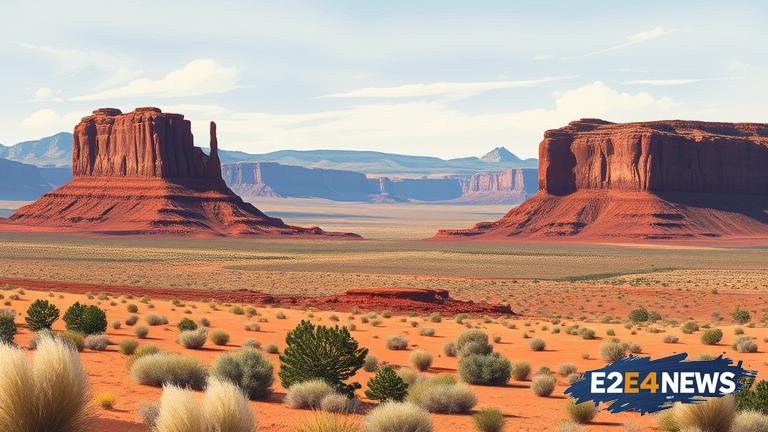President Trump’s recent decision to reduce the size of two national monuments in Utah has been met with widespread skepticism and criticism from residents of the state. The decision, which was announced in December, aims to shrink the Bears Ears National Monument by approximately 85% and the Grand Staircase-Escalante National Monument by about 50%. Many Utahns are concerned that the reduction in size will lead to increased drilling, mining, and logging in the areas, which could have devastating effects on the environment and cultural heritage of the region. The Bears Ears National Monument, which was established by President Obama in 2016, is home to numerous ancient Native American ruins and artifacts, and is considered a sacred site by many Native American tribes. The Grand Staircase-Escalante National Monument, which was established by President Clinton in 1996, is known for its unique geological formations and diverse wildlife. Utahns are also worried that the decision will harm the state’s tourism industry, which relies heavily on the natural beauty and cultural significance of the monuments. In addition, many are concerned that the decision will set a dangerous precedent for the protection of public lands and national monuments across the country. The decision has been met with opposition from a wide range of groups, including environmental organizations, Native American tribes, and local businesses. The Utah Democratic Party has also spoken out against the decision, citing concerns over the potential harm it could cause to the state’s environment and economy. On the other hand, some Utahns have expressed support for the decision, arguing that it will allow for increased economic development and job creation in the areas. However, many experts argue that the potential economic benefits of the decision are outweighed by the potential costs to the environment and cultural heritage of the region. The decision is also facing legal challenges, with several groups filing lawsuits to block the reduction in size of the monuments. The lawsuits argue that the president does not have the authority to unilaterally reduce the size of national monuments, and that the decision violates the Antiquities Act of 1906. The Antiquities Act, which was signed into law by President Theodore Roosevelt, gives the president the authority to establish national monuments, but does not provide for the reduction in size of existing monuments. The legal challenges are likely to be ongoing for several months, and could potentially be decided by the Supreme Court. In the meantime, Utahns are continuing to speak out against the decision, and are urging their elected officials to take action to protect the state’s public lands and national monuments. The decision has also sparked a wider debate over the protection of public lands and national monuments across the country, with many calling for increased protections and safeguards to prevent similar decisions in the future. Overall, the decision to reduce the size of the two national monuments in Utah has been met with widespread skepticism and criticism, and is likely to have significant implications for the state’s environment, economy, and cultural heritage. The decision is a complex issue, with many different perspectives and opinions, and is likely to be the subject of ongoing debate and discussion in the months and years to come. As the legal challenges and public debate continue, one thing is clear: the decision to reduce the size of the two national monuments in Utah has sparked a critical conversation about the importance of protecting our public lands and national monuments for future generations. The conversation is not just about Utah, but about the entire country, and the need to balance economic development with environmental and cultural preservation. It is a conversation that will require careful consideration and thoughtful decision-making, but one that is essential for the long-term health and prosperity of our nation. The reduction of the national monuments is not just a local issue, but a national one, with implications for the entire country. It is a reminder that our public lands and national monuments are a precious resource, and one that requires careful protection and preservation. As we move forward, it is essential that we prioritize the protection of these resources, and work to ensure that they are preserved for future generations. This will require a collaborative effort, with input and participation from a wide range of stakeholders, including local communities, Native American tribes, environmental organizations, and government agencies. By working together, we can ensure that our public lands and national monuments are protected and preserved, and that they continue to provide economic, cultural, and environmental benefits for generations to come.





